How Successful Course (Re)designs Help Eliminate Equity Gaps
Author: Abby E. Ryan
It’s no secret that higher education has an equity gap problem. But this isn’t a new issue or one caused by COVID-19. This has been an ongoing concern for far too long. Let’s take a look at what educational equity is, how it’s affecting our education system, and how implementing effective developmental math redesigns can aid in eliminating equity gaps.
Equity in Education: Fairness and Inclusion

Defined as a measure of achievement, fairness, and opportunity in education, educational equity depends on two ideas – fairness and inclusion. Fairness ensures that individual and social circumstances don’t restrict students from achieving their academic potential. Inclusion means setting a basic minimum educational standard shared by students regardless of their color, background, or ethnicity.
While equity encompasses various educational models, programs, and strategies that could be considered fair to some, they’re not precisely equal for everyone. For instance, equity is a term that is often associated with equality. Essentially, equality means that all students are treated the equivalent and have access to similar resources. Equity occurs when all students receive those resources to be successful in life after high school. In another way of looking at it, equity is the process, and equality is the outcome.
Less Funding in Low-Income Communities
When it comes to finding where inequities lie, you won’t have to look far. As an example, low-income communities receive less state and local funding than other schools in their district. These tend to be the schools with outdated classrooms, playgrounds, and resources. As a result, learning gaps can grow, affecting a student’s future and interest in education.
Disparities in Education
Other factors contribute to disparities in education as well. Unfortunately, educational expectations tend to be lower for Black students. A study from Educational Researcher entitled “Teachers are People Too” and summarized in Education Week describes the extent of racial bias in teachers as the same as in the general public. A staggering 77% of teachers have some measure of implicit pro-White/anti-Black bias. About 30% of teachers also have an explicit bias above zero. Whether explicit or implied, this bias may affect interactions with students, a student’s self-esteem and self-worth, and their outlook on the future.
If you think that inequity only hurts the student, you’re mistaken. Education at any level is imperative to an individual’s making. Low educational accomplishment calculates to limited economic possibilities later in life, continuing a lack of social fluidity through generations. In addition, it’s also a loss of talent across the board – not to mention the lost potential for our world as a whole due to sufficient supports.

The Course Redesign Process
As we’ve just discussed the problem, how about we talk about a solution? As part of a national plan to eliminate equity gaps, colleges are implementing developmental math course redesigns. A course redesign allows colleges to restructure their courses to meet pressing demands, such as ensuring all students are engaged and achieving the best possible learning outcomes for students as a whole. By improving gateway courses and how students gain access to them, colleges are not only improving their equity gaps but bettering their student retention and building stronger communities.
Almy Education has been going all-in on improving developmental math at colleges across the U.S. This isn’t legislative and policy reform. Thankfully, reforms have occurred in many states to improve policies and structures that didn’t serve students who weren’t ready for college-level math. Redesign work is about taking requirements and laws, plus past attempts (good and bad), resources available, and staff and faculty to create a functional system that serves all students in math from start to finish. It’s complicated, challenging, and often frustrating work. But challenges and roadblocks are to be expected, particularly in education. They are just the next obstacle to overcome to get closer to our goal: an equitable, effective system.
Equity-focused course redesigns
In higher education, structural change is never a swift process. While it may seem simple to tackle a new initiative to improve a course or enhance a placement policy, it won’t be successful with only random acts of redesign. The various aspects of redesigning courses and policies can reach multiple areas of an institution. With this kind of impact, colleges should institute a concrete plan that serves students, faculty, and administrators from start to finish. Creating a plan that is equity-focused, successful, and has the support of administrators and faculty is challenging but possible. At Almy Education, this is one of our core competencies: not only seeing what combination of interventions works best at a particular college but building the buy-in needed for the interventions to be implemented at scale and last. To learn more about how we do this, check out this page.
